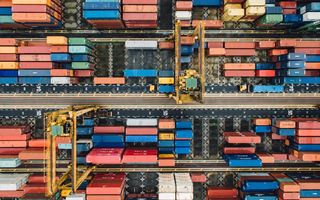(Finance) – While the planned production of green fuels grows in the European Union, Italy is unable to attract capital to initiate projects for the synthesis of these vectors, necessary for decarbonisation of maritime transport. This is what emerges from the mapping of European projects for the production of green hydrogen (and synthetic fuels derived from it), carried out by Transport & Environment, the leading independent environmental organization on transport. The analysis shows that, if all projects matured up to the production phase, almost 4% (corresponding, in energy terms, to around 1 Mtoe) of European maritime transport could be powered by green fuels by 2030, creating new jobs on the continent and starting the process of decarbonisation of the sector.
Italy risks being cut off. Italy is struggling to attract investments and – unless there is timely industrial policy stimulus – it risks remaining on the margins of the birth of a new strategic industry, replicating what is already happening in the transition to e-mobility.
Carlo Tritto, Policy Officer for Transport & Environment Italycommented: “The transition of maritime sector towards climate-neutral fuels it will offer great industrial, economic and employment opportunities. Precisely for this reason it is worrying to note Italy’s absence from the call for the development of a new industry, which promises to take hold in many European states. Our country does not seem to fully understand the role that these fuels will have. You can see it clearly from the PNIEC proposal circulated up to nowwhere the national volumes of e-fuel consumption, between now and 2030, are planned for 93% for road transport, while just 7% is reserved for hard-to-abate sectors such as aviation and maritime”.
In the EU at least 17 exclusive projects for shipping, but only a third are safe. At the beginning of 2024, there are at least 17 European projects aimed at producing synthetic fuels based on green hydrogen – more commonly called e-fuels – to be used in the maritime sector. If all these projects saw the light, would contribute to satisfying approximately 4% (1.06Mtoe) of the total energy requirement of European shipping by 2030 (approximately 28 Mtoe), moving the sector towards decarbonisation. To date, however, only 6 projects are certain of receiving the funding necessary for production; two-thirds of the projects are still awaiting a decision on this matter. There are a further 44 projects which could supply hydrogen to the maritime sector, bringing the total projects mapped by T&E to 61: but their possible production could be contested by other industrial sectors “hungry” for hydrogen.
The unknowns for producers: uncertainty regarding demand and necessary investments. If all the projects mapped by T&E reached the production phase, the objective introduced by the would be easily achieved FuelEU Maritime – the EU Regulation which defines the minimum quota of green fuels to be used in the sector – equal to 2% by 2034. However, most of the projects have yet to receive funding and none of those expected to specifically supply the shipping sector are currently operational. E-fuel producers identify as the main obstacles the risk of too low demand (therefore an uncertainty relating to the maritime sector’s ability to absorb future production) and the uncertainties determined by a regulatory framework that does not clearly guide the future energy sector, especially with regard to the development of capital intensive vectors. The uncertainty of the scenarios puts at risk, in addition to millions of tons of green fuels, also a lot of potential employment: it is estimated that – globally – the energy transition of maritime transport could generate around 4 million new jobs by 2050 .
Denmark and Spain lead the race for e-fuels. There Denmark alone accounts for more than half of all hydrogen volumes planned for the 61 projects mapped by T&E. But looking at the production of fuels intended exclusively for maritime transport, Spain is the country with the greatest potential, with a third of the expected volumes. Despite its insular nature, the UK has very few projects while – in addition to Italy – Greece also seems not to be affected by development plans. Yet these are countries with a strong naval vocation.
Synthetic ammonia appears to have great potential for the maritime sector. In the long term, announced production plans appear to reward synthetic ammonia as the most effective option to replace fossil fuels. This fuel represents 77% of the expected production volumes. To date, however, none of these projects have resulted in a final investment decision.
Carlo Tritto he concluded: “The Maritime shipping seems to be facing the chicken and egg dilemma: on the one hand, fuel producers are waiting for clearer demand signals from shipping operators before making large investments. Maritime operators, for their part, are waiting for these fuels to become more widespread and cheaper before signing supply agreements. In this stalemate, the European Union should intervene by setting minimum targets on both the supply and demand sides, thus providing investment certainty to both fuel producers and shipping companies.”
T&E’s appeal to EU states: “Introduce an e-fuels sub-target of 1.2%”. In transposing the EU Renewables Directive (RED III), T&E recommends that Member States introduce a sub-target of e-fuels in maritime transport of at least 1.2%, as suggested by the revision of the Directive. This would provide guarantees not only to current projects already financed, but especially to further projects awaiting a final investment decision. According to T&E, it would also be desirable to reinvest the proceeds of the EU carbon market – recently also extended to maritime transport (ETS) – to support nascent projects, starting the process of decarbonisation of the sector as soon as possible.
